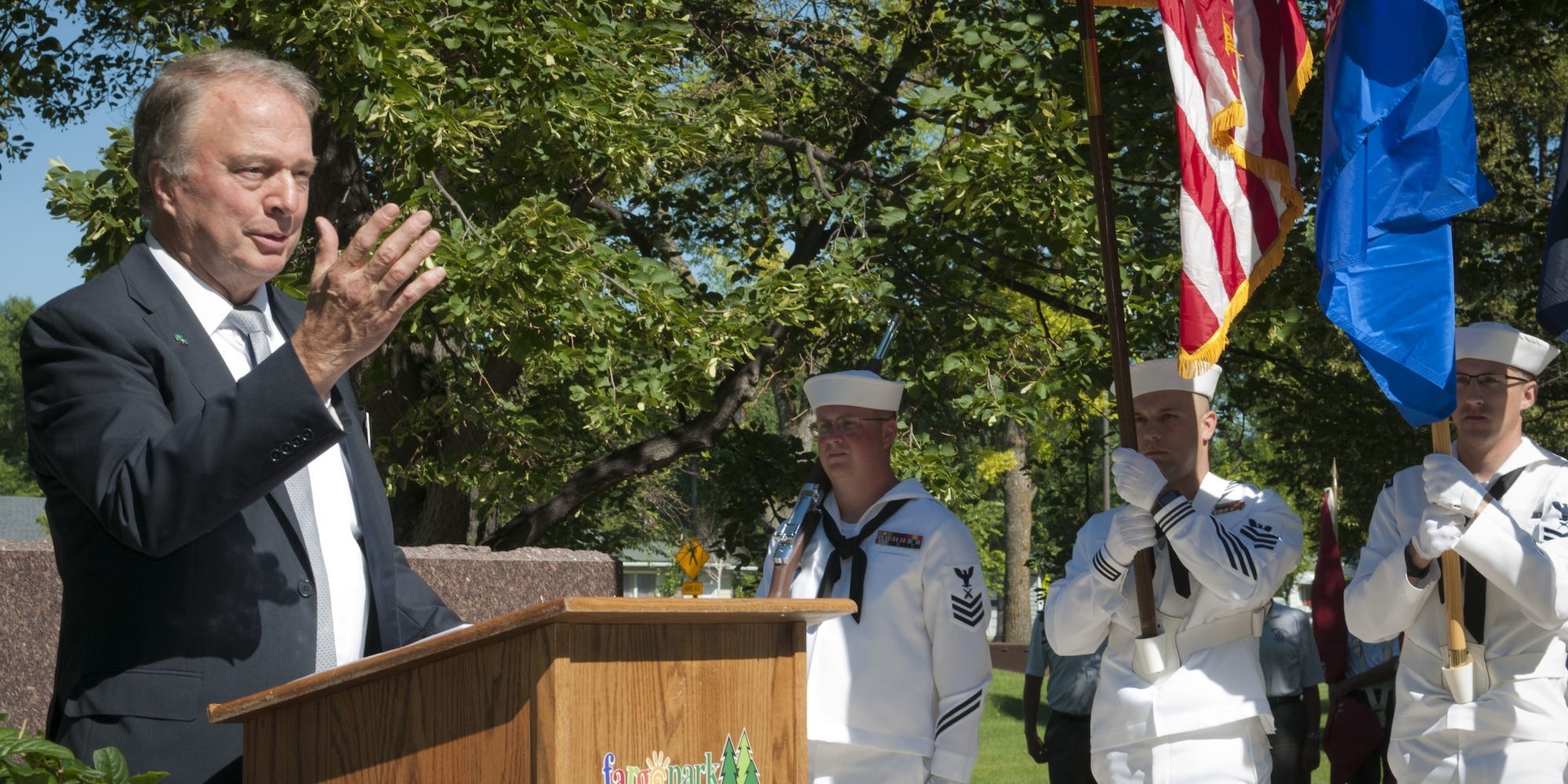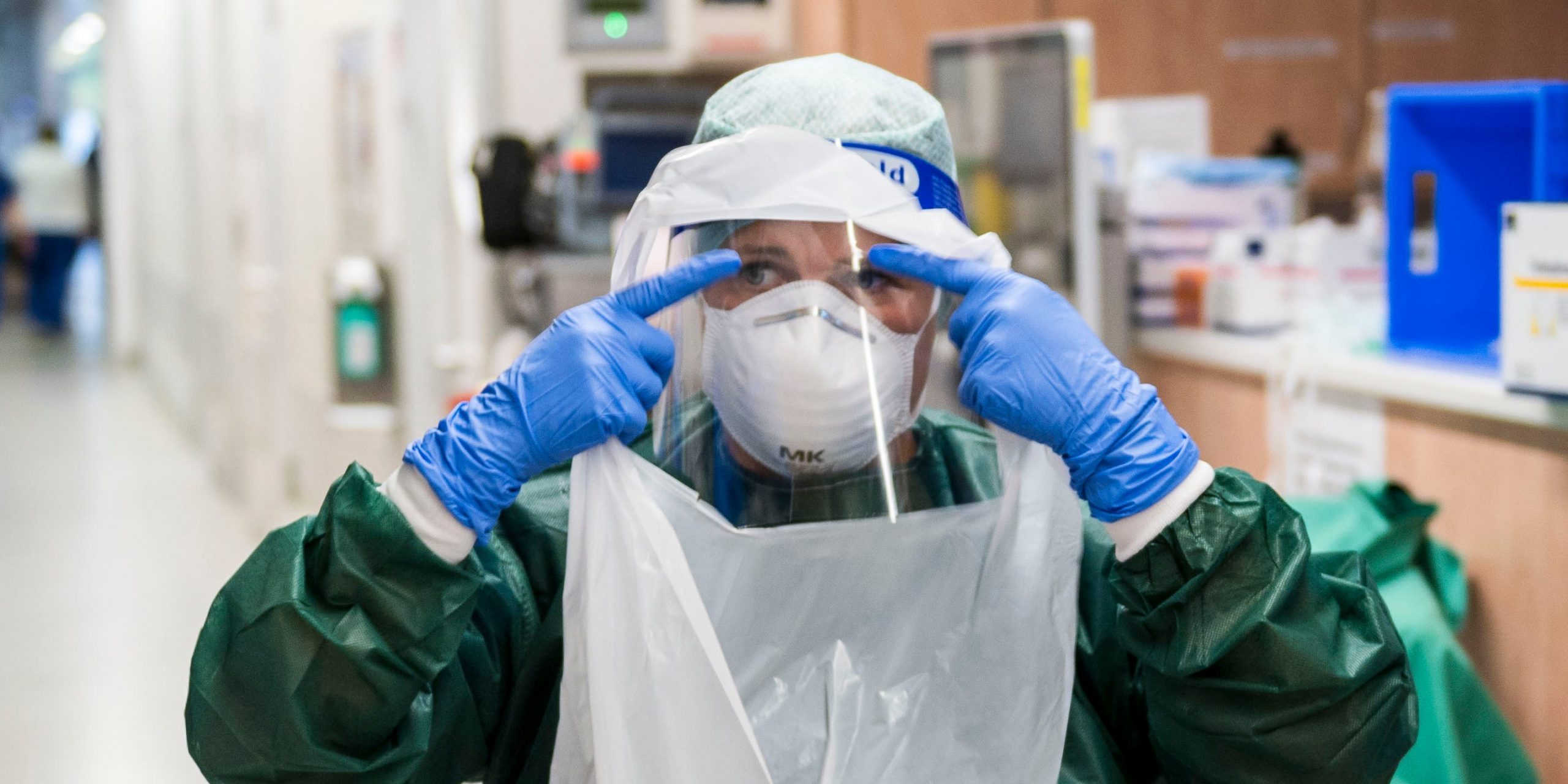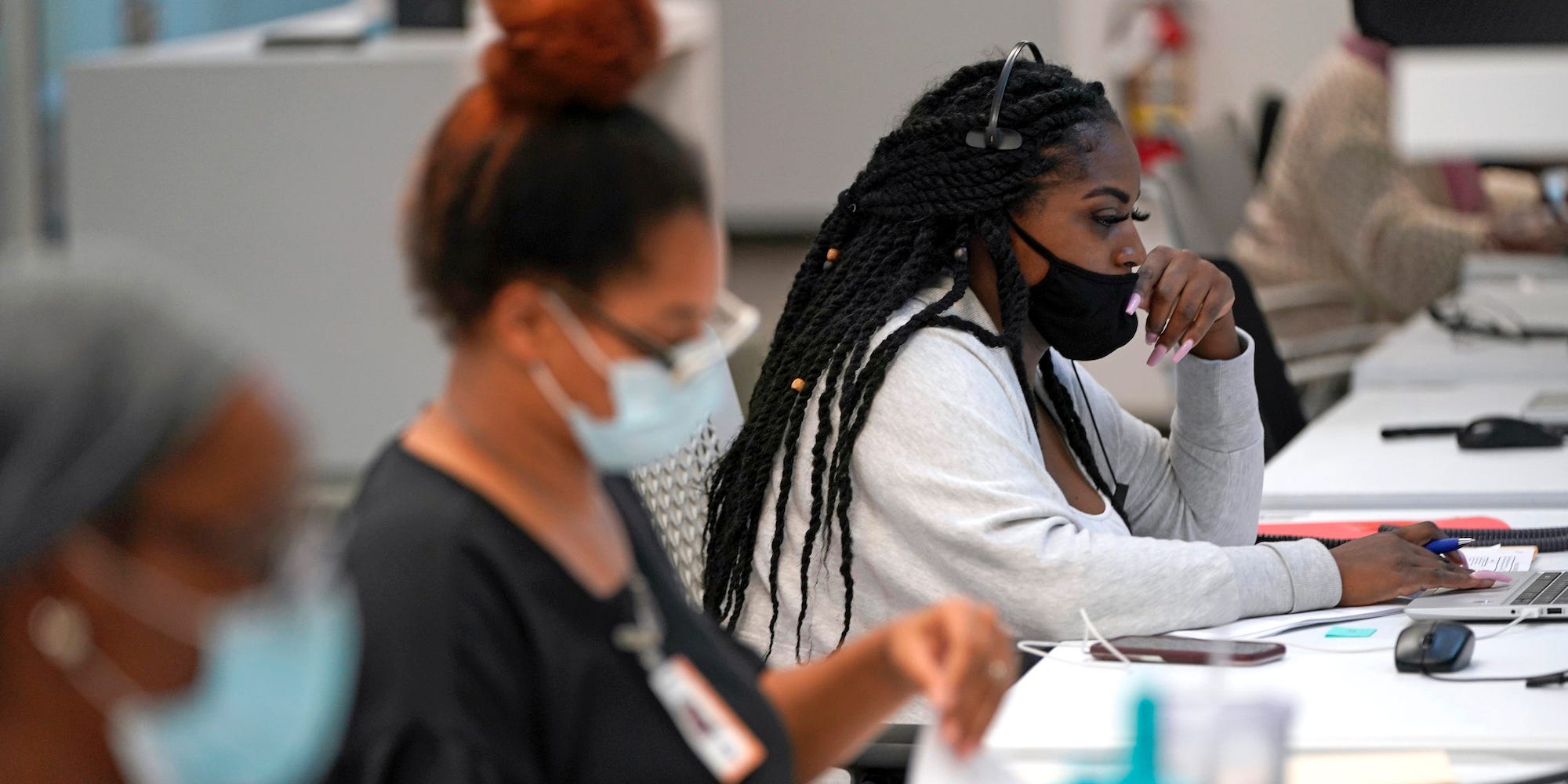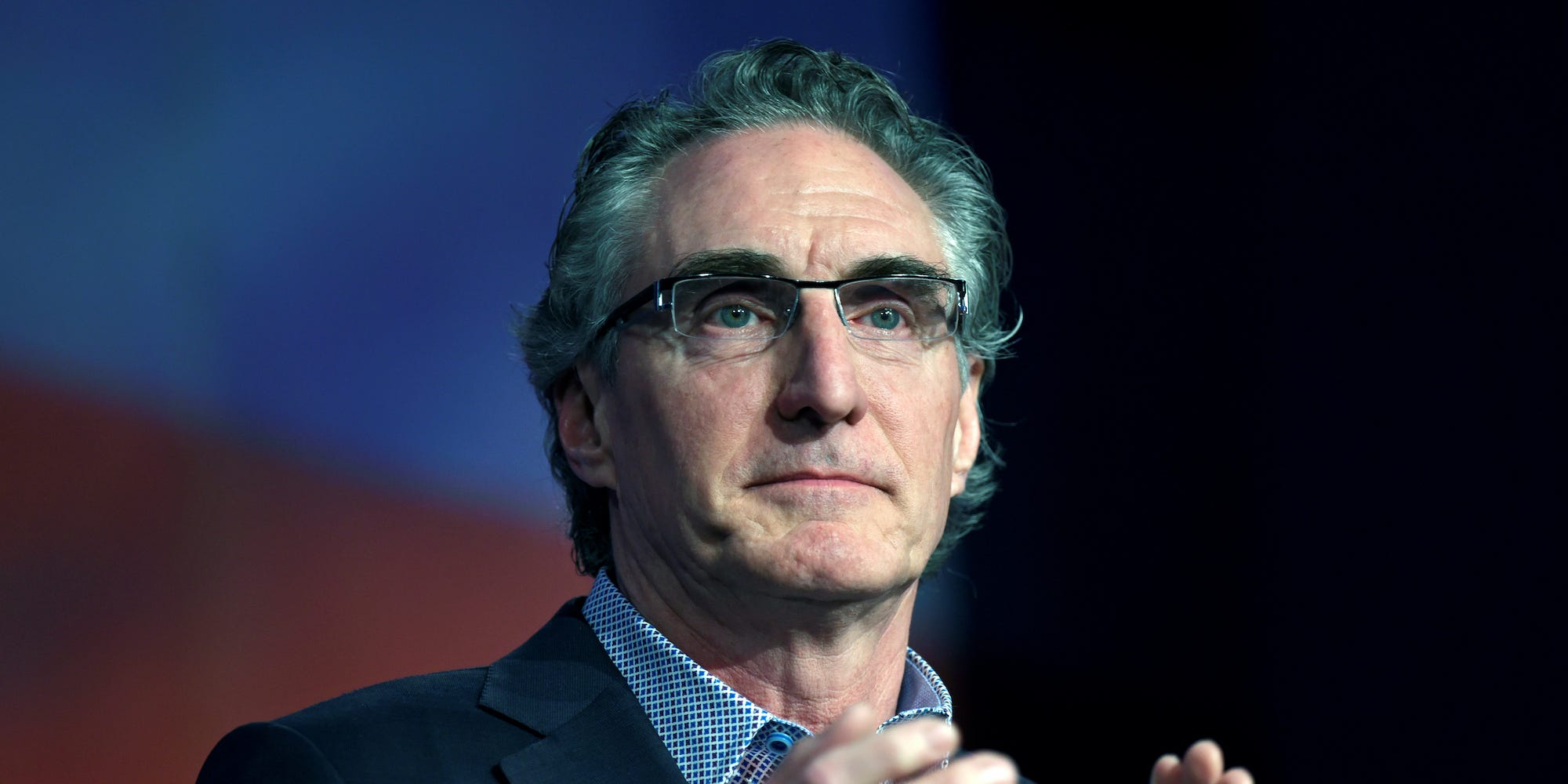
Photo by Smith Collection/Gado/Getty Images
- North Dakota has experienced one of the biggest COVID-19 outbreaks the US has seen since the start of the pandemic.
- Dr. Tim Mahoney, the mayor of Fargo, the state’s most populous city, recently implemented a mandatory mask order to help address the growing number of cases.
- There’s no penalty for not abiding by the city’s face covering mandate, but Mahoney says more people have been wearing masks since it was implemented on October 19.
- Visit Business Insider’s homepage for more stories.
With the COVID-19 pandemic raging across the US, authorities have been struggling to stand against waves of the fast-moving virus.
In North Dakota, where the novel coronavirus has infected more than 72,000 people and claimed more than 840 lives, Dr. Tim Mahoney, a physician and the mayor of Fargo, signed an order in late October requiring people to wear face coverings while indoors with people from outside their personal households after the state recently experienced one of the worst COVID-19 outbreaks in the country.
North Dakota became the first state to surpass 100 cases per 100,000 people in October. It is now among the majority of US states that have implemented rules requiring people to wear face coverings. There is, however, no penalty for not doing so. Nevertheless, the mayor told Business Insider in late October that the mandate has helped and that he is hopeful the number of COVID-19 cases will fall.
The transcript has been lightly edited for clarity.
Sarah Al-Arshani: You recently announced the mandatory mask order but you also said there’s no penalty for not wearing one. How do you plan to enforce the mandate?
Fargo Mayor Dr. Tim Mahoney: Well, we're on the river right next to Minnesota where they have a mask mandate with enforcement. I've visited with their mayor of Moorhead, and they haven't really enforced it. Nobody's been given a ticket, nobody's been doing police enforcement. So when I talked to my police chief about having enforcement, he said we don't have really enough manpower to do that. If you had to go out and give tickets for people not wearing masks — and his experience in Wisconsin was that you write a ticket, the person rips it up, throws it away, and continues to walk around without a mask because you're not really going to put them in jail. And with COVID-19, we don't want to fill our jails with people that don't wear a mask.
So, when we looked at that, we felt like let's see if people will be compliant with a mask mandate without enforcement. And, lo and behold, we found great compliance. So what's happened is the businesses now kind of blame the mayor for saying you got to wear a mask in their business. So they don't really irritate their client. It's more that, well, the mayor says you got to do it, so you gotta do it. And so it seems that then the public is okay if that's what we have to do, that's what we have to do .... I'd say our compliance went from 30-40% to 80-90%.
The word mandate has some power and that's what I found because we had a directive that told people to wear a mask since August and our compliance was horrible, but I put out a mask mandate, and then all of a sudden they're, "Oh, he's serious about this. I guess we have to put a mask on. "

Thomas Lohnes/Getty Images
SA: Dr. Deborah Birx criticized Dakotans in October for having what she said was "the poorest mask use in the country." What's your response to that, and do you think Fargo could change that?
TM: She was in Fargo some weeks ago, so I was pleased she didn't mention us as being bad about wearing masks. She actually at that meeting, which I went to, said she saw some good compliance in the community. And so, yeah, I think that for us, we were complimented because we did our mask mandate.
Minot, is another large city in the state immediately did it that night. And now we have six other cities that have a mask mandate or directive that they didn't have before. And I was very surprised because as you go further West in our state and more people are a little bit more independent and don't feel that you should tell them what to do. So, even our Western parts of the state were doing mask mandates. So now we've gone in all our major cities have done it and two of our reservations have done it as well. So we're very pleased that people said, "Oh, okay, this might be something we need to consider."
SA: The state as a whole has been able to avoid terrible COVID-19 outbreaks in the spring and summer, but now it has 105 cases per 100,000 people. What happened that caused the state to now have one of the worst outbreaks ever?
TM: When we first started, we thought we were lucky. We thought we outsmarted this virus, which of course we didn't, but part of what drives our numbers to be so high - we do contact tracing. And we're trying to test people that might be positive. We're just a small state with 770,000 people. So we're doing more testing for capita than any place in the country, but we're having a tendency to test more high-risk people. So you're testing, contact tracing. People are close to somebody who is positive. The community spread is moving faster than it's ever done.
SA: You mentioned contact tracing, tell me a little more about that. Does the city have enough contact tracers to meet the demand and what trends are you noticing in terms of where people are getting infected?
TM: Well, what happened is initially, I think we had 15 to 20 contact tracers, I think we're up to 25 to 30. Nurses are now doing contact tracing. One day, they were behind by 300 or 400 clients, but now we're getting that caught back up. The governor at one time said, "we'll just call the people that are positive and they're supposed to do their own contact tracing." And we migrated back [from that]. It's better if we help them in the contact tracing. That works better.
So what we're finding is the larger social events are where we're finding more of the virus spreading. So we had gatherings in the summertime which were outside, and there were fewer numbers. Now we're getting people in gatherings inside because it's getting cold out here and people will be in more confined spaces. Initially, we were thinking it was groups of 200 or 300 people that were causing it at weddings, funerals, those types of things. But now we're even finding it in groupings of 10 to 20 because people are close to each other, not wearing masks, so we're kind of pushing now. At one point we used to say, please, don't gather more than 10 people in an area but we are finding if one-in-10 is positive, your spread is more rapid.

David J. Phillip/Associated Press
SA: There were reports recently that there are only two staffed ICU beds available in Fargo. How is the city addressing that shortage?
TM: So in our state we're the biggest city, they have two large hospital systems that work here, and oftentimes nationally they'll say only two beds are left, but the reality is they just would have to staff up. So for instance, on the day they had two beds, they were setting up a 14-bed unit to take care of more people. So we have a surge capacity in our community of 600 and our hospitalization right now is maybe 60. So we're far from our capacity and across the state, our numbers are up this time, we have 184 in the hospitals, but we're still staying abreast of that.
Of course, in the spring, we were scared of the virus and didn't know what to do, but we found our capacity was 600 to 700 patients throughout the state. We're just not hitting those numbers. I think we're having the same issue all across the nation. And I think a lot of people fill in with traveling nurses who come in and with all the different issues in different states with numbers going up. That will not be as easy. What we probably will do is decrease our elective surgeries or elective medical procedures that we're doing to take care of the capacity issues.
SA: I've seen reports and this isn't specific to North Dakota or Fargo but in general, for people who have been dealing with other illnesses, especially at the beginning of the pandemic, routine care was sort of limited and they were concerned about their health. So when you say elective procedures might be limited, what kinds of procedures would be affected by that? How do you plan to prioritize non-coronavirus-related care?
TM: What we found is a lot of people were scared to go to the hospital and they delayed care and treatment. So we saw people with cardiac disease, cancers, and such who delayed them for three to six months. And as healthcare providers, we decided we never wanted to have that happen again because you had people who actually had worse disease by the time they got treated. Normally, what we'd go after is orthopedic — you can have your knee or shoulder done later. You don't need it done right now, but we wouldn't back off of heart surgery. We wouldn't back off of a cancer surgery. So we just changed the dynamics of that.
SA: Fargo is close to a lot of colleges. Are you seeing an influx of student illnesses?
TM: We have a double hump by age group in our community. So we have an average age of 31 years old. And so we have a lot of people in that age group. And then the next time you see it go up again, as in the older age group, cause we have a lot of retirees who come into Fargo as well. If you look at who is affected, the college-age kids are catching it, as well as some of the people in the older age groups.
The college-aged kids, when they first came to town, we tested all the students who went into North Dakota State University, one of our major universities, 16,000 students, and our numbers were up at that time. Since then we've just diligently been working with the university. We get good compliance on campus. It's off-campus that we have issues, and that'd be the social gatherings. And so we're working with the dean of the university to address his off-campus population to see if there are ways we can decrease the social gathering.
SA: You previously said the mask mandate was in part because of a limited state response. What do you hope to see the governor do?
TM: We communicate with the governor every week, but what he's tried to do in businesses, and then as far as the reaction to the virus is to allow the locals to make decisions for their communities and we're the biggest urban community in the state. So the difference, is do I shut your businesses down or do you do that? And early on, the mayors pushed back and said, "We want to have some ability to be part of the decision-making."
So it's mostly pushed back on us. And again, all the major mayors we've talked to the governor and more and more of us ... feel the mask would be very helpful to make it uniform throughout the state. But yet he's still at this time said, well, it's a local county city decision and that's where it's at. And that's why we pushed forward on ours. Our numbers were going to Y and we didn't really like to be number one in the nation on per capita cases. So we feel really strongly that we have to do something to make those numbers go down.
"Right now, the data demands a higher level of mitigation efforts to reverse these dangerous trends, to slow the spread of this virus, and to avoid the need for economic shutdowns," Burgum said in a video message. "Our situation has changed, and we must change with it."
Editor's note: Since this interview was conducted, the North Dakota Gov. Doug Bergum has since instated a face mask requirement across the state that went into effect on November 14 and is scheduled to end December 13.

REUTERS/Dan Koeck
SA: So, what do you need from the state and federal government in terms of support?
TM: From the state, we need any equipment ... support of the hospitals, those types of things that we might need. From the federal government, sometimes there is federal packages that help us with funding, help our businesses that are having different struggles, and then our employees who sometimes don't have a wage, or have a wage concern — we have quite a few people in the community. Our city used to have a 2% unemployment rate, lately we're up to 6-to-8%, and we still have difficulty getting everybody back to work. So it's more if the feds and state would help us up with economic losses. Now, the state has stepped up with COVID-19 money. The city of Fargo is going to receive close to $14 million to help us with the effects of the novel coronavirus in our community. That has been very helpful, but the areas I see have risk are restaurants, bars, and hotels.
The hospitality industry has been hit fairly hard. There are a couple of options in which they can get some money from the state, or get money from the federal areas. But I think as the biggest question is how long is this going to go on? How are we going to help our businesses not fail? And we've seen probably 10% of our restaurants had failed so far. So if this is prolonged, I'm very concerned. You're going to have a huge hit into that industry.
SA: What do you want to tell Fargo residents?
TM: We want to overcome. We're going to be stronger when we get through this and we have kind of a local saying: "get'er done." It's kind of a local moniker we use, meaning get to it. We may have to do this for a month to two months, but the new normal, we want to get the spread of this virus down to a much better level. It's good for all of us if we do the right thing.
SA: Is there anything else you'd like to add?
TM: COVID-19 is an interesting disease. As a physician, I have to say it's one of those things that just finds a different way to get infiltrated into the community. You have to respect it because it just keeps spreading unless you respond aggressively. It's one of the more frustrating challenges I think any of the mayors have faced because there's not a simple way to make it go away.


